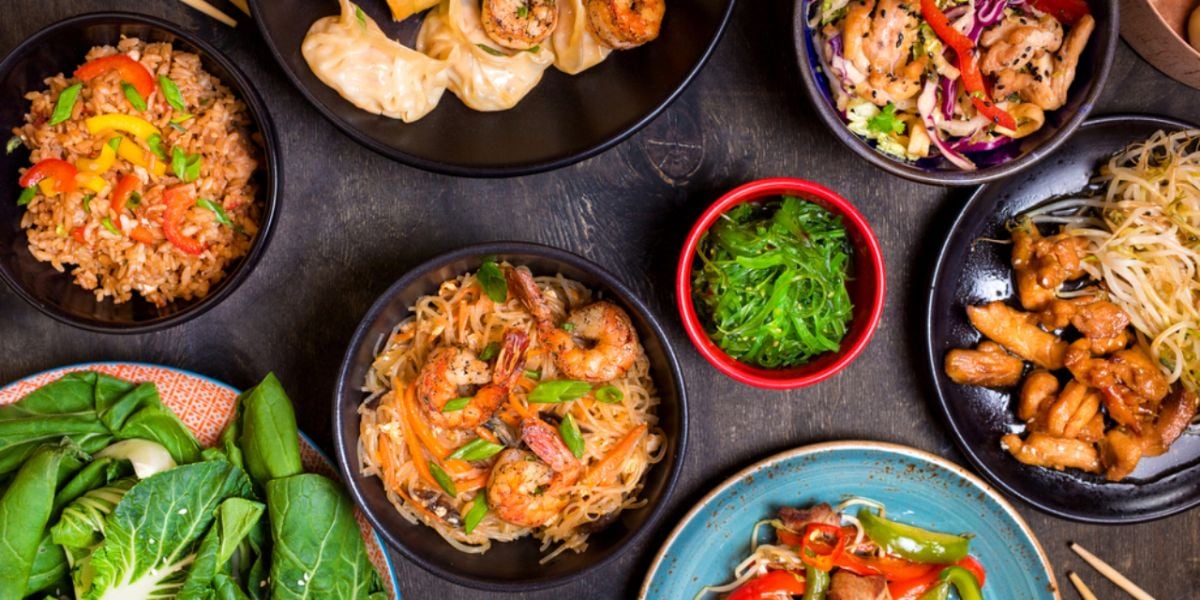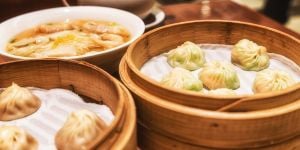
Chinese cuisine is one of the most popular cuisines in the world, and its dishes frequently make the list of the world's most famous. From spicy to sour and sweet to zesty, food in China is diverse and exotic, using a variety of ingredients, spices and sauces. Once you move to China, your taste buds will have a whole new world to discover. But before indulging in a feast, learn a few interesting facts about Chinese food, restaurants, and eating habits.
Food and eating are considered fundamental rituals in China. You may often be asked 'chi fan le ma' ('have you eaten') as a common greeting, and food is a favorite topic for conversations and a great way to break the ice.
Chinese cuisines
Due to its vast territory, China has several distinct regional cuisines. The eight main cuisines of China are: Cantonese, Fujian, Zhejiang, Jiangsu (famous for their lightness and an abundance of fresh seafood), Sichuan, Hunan (praised for hot spices), Anhui, and Shandong.
Cantonese is the most internationally widespread of Chinese cuisines. Popular in southern China and Hong Kong, Cantonese food is rich in seafood and light in flavor. It is also famous for a variety of ingredients and the popular Chinese saying 'Cantonese people eat everything with four legs, except tables, and everything that flies except airplanes.'
Sichuan dishes are notorious for their numbingly spicy flavor due to the abundant use of Sichuan peppercorn, and Hunan cuisine is generously adorned with chilies.
Jiangsu province and its capital Shanghai offer a lot of desserts and sweet flavors, as well as the famous sweet and sour spare ribs, while Zhejiang is known for a variety of cooking methods and dishes from freshwater fish.
Food in Fujian is surprisingly mild compared to other Chinese cuisines. It's known for its unique 'wild' flavors, using ingredients from the sea and mountains in the region. Anhui province offers a hearty farmer's type of cuisine, with a lot of ingredients coming from the lush neighboring forests. Shandong (or northern cuisine) uses a lot of wheat (especially noodles) and seafood in their cuisine, and braising and pickling are popular cooking methods.
Good to know:
Spicy food is prevalent in China, so be careful when ordering food, especially if you don't handle heat well. You will usually be asked whether you want your food served spicy or not. Say 'bu la' if you don't want it spicy.
Restaurants and eating habits in China
Wherever you are in China, you are sure to find restaurants serving any of the eight cuisines, as well as a variety of international restaurants, fast food chains, and coffee shops. Most menus are in Chinese (although you are sure to find English translations in bigger cities and tourist areas), but they come with pictures, which makes ordering food much easier.
Traditional restaurants have round revolving tables that you will need to spin to get closer to the dish you want to try. It is customary in China to order many different dishes, which all diners share. At the beginning of the meal, you will be served a sealed set of utensils: usually a small bowl, a small plate, a teacup, chopsticks, and a soup spoon. A teapot of hot water and a large steel bowl will also be placed on the table. You will first need to wash your utensils with warm water and rinse them in the bowl. Dishes will then appear on the table one by one, and each diner typically gets a small bowl of rice to pair them with. A serving of fruit or sweet pancakes is a traditional ending to a meal. Desserts like cake or ice cream are not popular in the country.
Eating habits in China are different from what's common in Western countries. It is acceptable to spit out small bones and place them next to your plate, speak while eating and eat from one dish. Some of the local dishes may also seem a bit unusual to a western diner. For example, chicken feet are a favorite snack, especially in southern China.
If you need a break from Chinese food, big cities offer a variety of international dining options, while even smaller cities would have McDonald's, KFC, and Starbucks.
Good to know:
If you don't yet feel comfortable eating with chopsticks, you can ask your waiter for a fork and spoon; most restaurants would have these in reserve.
Food delivery in China
One of the most convenient things about living in China is that you will be able to have almost anything delivered right to your doorstep, and this includes food from any restaurant, fast food chain, and even coffee shop. That's right, in China, you can even have Starbucks delivered.
The two most popular food delivery applications are Ele Me and Meituan Waimai. Simply download the app onto your phone and allow it to access your location. You will then see all the available restaurants in the area, menus, pricing, and estimated delivery time.
Food safety in China
The country has been rocked by several food scandals in the last few years, raising concerns over general food safety. Some of the recently uncovered incidents include the use of 'gutter oil' (reused cooking oil), high concentrations of heavy metals in rice, bleach-soaked meat, and even the use of opium in sauces. Using MSG (monosodium glutamate) to enhance the taste of food is also a common practice in restaurants and street food stalls. You can ask the cook or waiter not to add MSG to your food. The Chinese name for MSG is 'weijin'; you can say 'bu yong jia weijin' (the little translation would be 'no need to add MSG).
Avoid buying food from unknown sources such as small shops and street markets. Large supermarket chains generally have stricter quality control. Dine at restaurants that are popular with the locals and, when buying food on the street, pay attention to the way it's cooked.
Useful link:
We do our best to provide accurate and up to date information. However, if you have noticed any inaccuracies in this article, please let us know in the comments section below.








